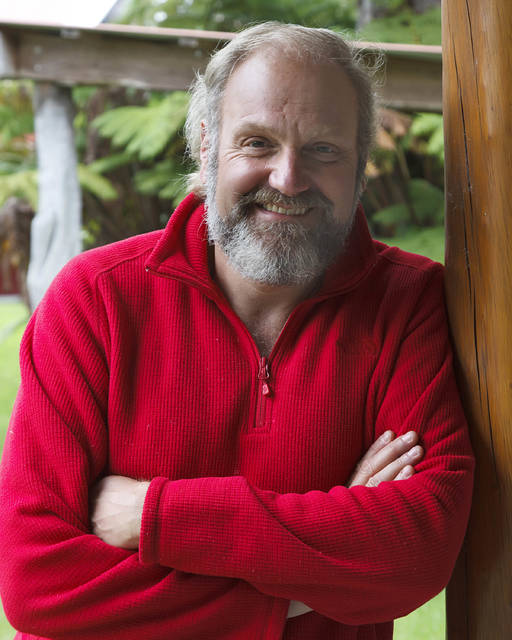KAILUA-KONA — Residents on Hawaii Island experienced last year’s Kilauea eruption by either living on or near the rift zone, by feeling the effects of earthquakes and vog, or by getting up close and personal to study it.
The long-running television series “Nova” has now brought those experiences into homes across the country.
“Kilauea: Hawaii on Fire,” the third episode of the science documentary program’s 46th season, focuses on the events leading to the volcano’s May 3 eruption, the eruption itself and the experiences of the residents. The episode was released on Jan. 23 on PBS.
Cheryl Gansecki, a professor of geology at the University of Hawaii at Hilo, was one of many Hawaii Island residents featured in the episode, as she helped the television crew, and the audience, understand the science behind Kilauea’s eruption.
“I’ve worked with a lot of TV shows, but I usually don’t like to be in front of the camera so I usually stay behind the scenes,” Gansecki said. “But this one, it was ‘Nova,’ so I couldn’t resist. I grew up watching it.”
Gansecki said she watched the episode after it was released, and she said the show did a “decent” job of getting the science right.
“As a scientist, you’re always kind of hoping they’ll get the story right,” Gansecki said. “This one, it wasn’t bad.”
For a one-hour program to cover the massive scope of Kilauea and its eruption, information has to be simplified for the average audience that will be watching. Information also gets left out, which Gansecki understands, but she wishes those watching could see more.
“There was so much cool stuff that didn’t get covered also,” Gansecki said. “There’s a lot more behind the connection of the eruption between the lower rift zone and the collapse of the summit, and how that whole thing worked, and what was going on as the magma was draining and the summit was collapsing.
“That was one of the most scientifically fascinating thing that happened in this eruption. We always suspected that’s how calderas collapsed, but to actually witness it and to see it happen in steps … that was fascinating and new.”
Gansecki was interviewed at her laboratory, and she appreciated both her lab and her chosen profession getting the glamour treatment for television.
“It was neat that they were kind of interested in the geochemistry story, which is what I do, which is something no one has ever been interested in,” Gansecki said with a laugh. “I will say their camera people are absolutely amazing and professional. The rock labs are kind of dingy and they made everything seem fancier on TV. It was really impressive.”
To capture more of a human element behind the eruption, “Nova” also follows Volcano residents Tom Peek and Catherine Robbins.
The duo are former eruption rangers at Hawaii Volcanoes National Park, and have resided in Hawaii since the 1980s. Robbins is now an artist and Peek a writer, and the episode documents them packing up their home in preparation for a possible evacuation.
Peek said their history with the park made them the perfect candidates to interview for the geological, cultural and political aspects of the eruption.
“As a science documentary, they did a pretty good job,” Peek said. “As a documentary about the eruption, it was limited by the scope of what a ‘Nova’ program can do. And that was too bad. Because it’s a much bigger and compelling story than just what the scientists did.”
Peek said the camera crews asked him, on and off camera, about how Leilani Estates and other subdivisions on the east rift zone were able to be built, which Peek said he hopes someone else can cover in another documentary.
“There’s a lot more that needs to be described about the human suffering that was caused and how the disaster part of the eruption could have been prevented by different building policies,” Peek said. “And that’s important because that’s being discussed again: Do you rebuild on the rift zone?”
While “Nova” strives to teach its audience about science and nature, Peek said he saw the crew learn a few things themselves about Kilauea.
“One thing that struck the film crew was the acceptance by many of the local residents, especially the Native Hawaiians, as accepting that this is part of living here,” Peek said. “And that struck them because they live in a place where people are less accepting when there is a natural disaster.”
Info: Watch “Kilauea: Hawaii on Fire” at https://www.pbs.org/wgbh/nova/video/kilauea-hawaii-on-fire.




